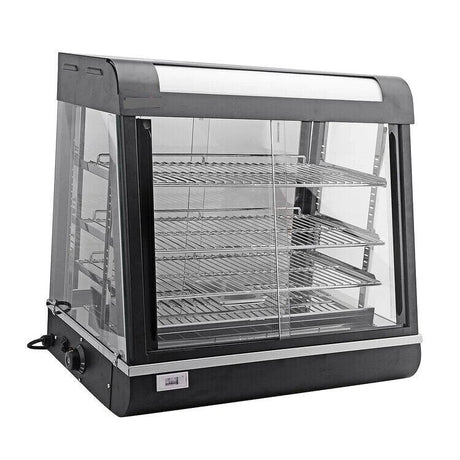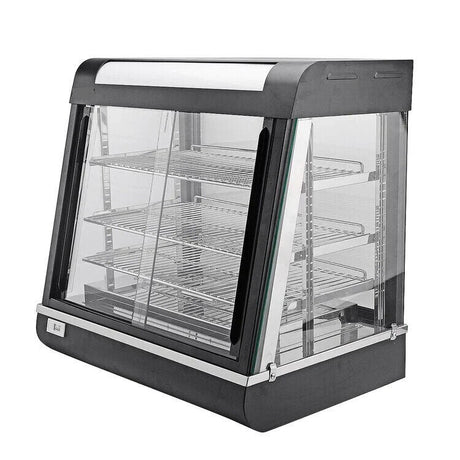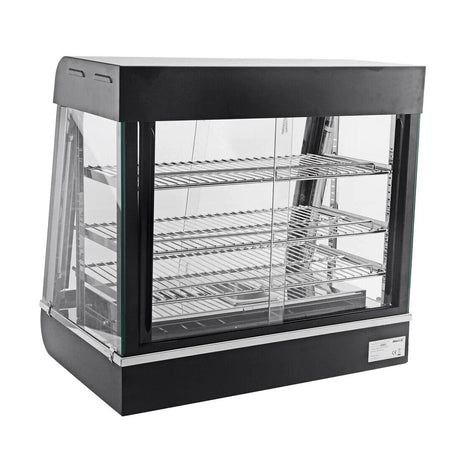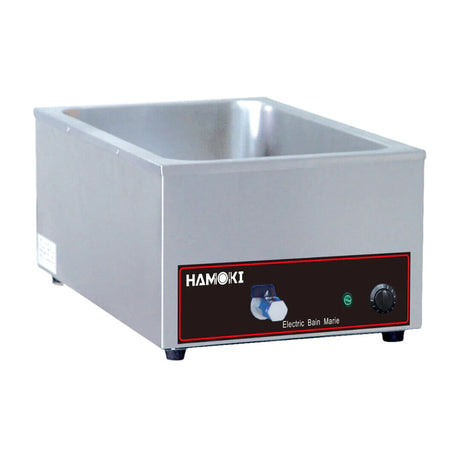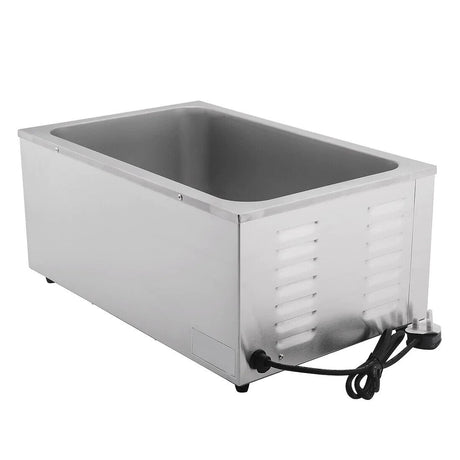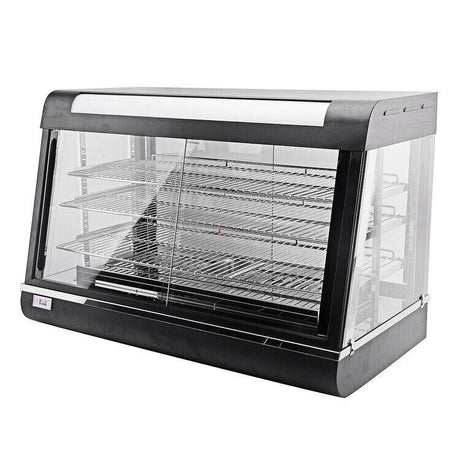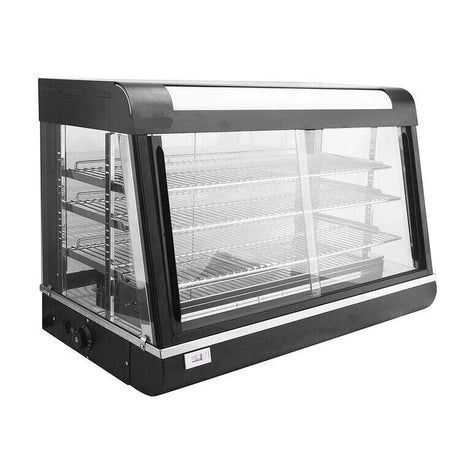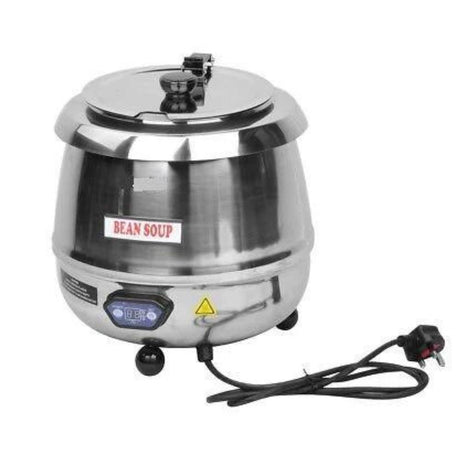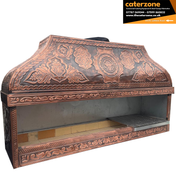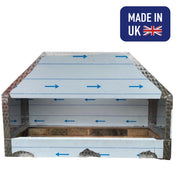- £178.05 offNew arrival
Caterzone
Hot Display Cabinet Hot Food Warmer Heated Display Cabinet Countertop 110 Litres
In stock (45 units)Sale price £459.95 Regular price £638.00Unit price /Unavailable - £69.00 offNew arrival
Caterzone
Bain Marie Electric Wet Well Heat Sauce Food Warmer with Drain Tap Depth 250mm
In stock (102 units)Sale price £178.95 Regular price £247.95Unit price /Unavailable - £206.55 offNew arrival
Caterzone
Hot Display Cabinet 3 Shelves Food Warmer Countertop Heated Hot Pie Cabinet 150L
In stock (25 units)Sale price £532.95 Regular price £739.50Unit price /Unavailable Caterzone
Soup Kettle 10 Litre Food Warmer Bain Marie Sauce Pot Bean Soup Stainless Steel
In stock (23 units)Sale price £114.95 Regular price £159.50Unit price /Unavailable
Commercial Food Warmers: Keep Food Hot and Ready to Serve
Serving steaming hot food to customers is always a smart move—no matter how busy it gets, customers will always choose a hot, fresh dish over one that’s cold or lukewarm. That’s where commercial food warmers come in handy. Whether you run a restaurant, catering business, or a bakery, these appliances are essential for maintaining the temperature and quality of your meals.
Commercial food warmers are available in various models designed to suit different types of foodservice operations. Finding the right one for your business ensures meals stay safe, hot, and ready to serve—all while helping you maintain a high standard of service.
Types of Commercial Food Warmers
1. Countertop Food Warmers
Compact and convenient, countertop food warmers can be placed on any surface. They’re ideal for keeping soups, sauces, and small platters warm. Perfect for cafés, catering trucks, and kitchens with limited space.
2. Buffet Food Warmers
Designed for high-demand environments, buffet warmers are larger and can hold multiple dishes at once. They’re perfect for restaurants, event centers, and buffet-style service establishments.
3. Drawer Food Warmers
Drawer warmers are excellent for keeping bread, rolls, and pastries warm and moist. The drawer design prevents food from drying out, making them a popular choice in bakeries and restaurants.
4. Bain-Marie Food Warmers
These units use gentle, moist heat—ideal for delicate dishes that can overcook easily. They’re commonly used for heating sauces, custards, or dishes like hollandaise that require precise temperature control.
5. Display Food Warmers
Display warmers not only keep food hot but also show it off to customers. They’re ideal for bakeries and delis looking to attract attention to fresh pastries and prepared dishes throughout the day.
Key Factors to Consider When Buying a Food Warmer
- Adjustable Thermostat: Helps regulate temperature to prevent overheating or drying out food.
- Energy Efficiency: Choose models that consume less power without compromising performance.
- Humidity Control: Keeps meats, pastries, and baked goods moist while maintaining heat.
- Ease of Cleaning: Opt for stainless steel interiors and removable trays for easy maintenance.
- Portability: Compact, mobile designs are perfect for catering and event-based services.
Benefits of Using Food Warmers
Commercial food warmers ensure meals stay hot, safe, and ready to serve all day long. They help reduce food waste, improve customer service, and make peak hours less stressful by freeing up staff to focus on guests rather than constantly reheating food.
With hot, well-presented dishes, customers enjoy higher satisfaction, which leads to repeat visits. In buffet setups or self-serve stations, warmers make food look more appealing and allow guests to serve themselves easily.
Marketing Your Food Warmers
When promoting commercial food warmers, highlight practical benefits such as consistent temperature control, energy savings, ease of cleaning, and faster service times. These qualities appeal to a wide range of foodservice businesses.
For targeted marketing, offer larger units like buffet warmers to catering companies and event organizers, while smaller countertop models can be promoted to cafés, delis, and small bakeries. Including real testimonials or client success stories helps demonstrate value and build trust with potential buyers.
Applications and Use Cases
Caterers and Event Services
Commercial food warmers make it easy to serve hot meals at outdoor or offsite events, even in areas without full kitchen setups.
Food Service Kiosks
Ideal for small service kiosks or carts with limited space, food warmers help keep dishes hot and ready for quick service.
Retail Bakeries
Bakeries can use warmers to keep bread, pastries, cookies, and pies fresh and inviting throughout the day, boosting sales and customer satisfaction.
Fast-Casual Restaurants
In busy eateries or self-service restaurants, food warmers allow customers to enjoy hot, high-quality meals quickly, even during rush hours.
Maintenance and Care Tips
- Clean Regularly: Use mild cleaning agents or approved detergents to maintain hygiene.
- Monitor Temperatures: Check readings regularly to ensure consistent performance and food safety.
- Perform Routine Maintenance: Regular equipment checks help extend the life and efficiency of your unit.
Latest Trends in Food Warmers
Modern food warmers are becoming smarter and more efficient. Newer models are being developed with improved insulation to save energy while maintaining consistent temperatures.
- Smart Food Warmers: IoT-enabled units allow control via smartphones or computers.
- Eco-Friendly Materials: Manufacturers are increasingly using recyclable and sustainable materials.
Finding a Reliable Food Warmer Supplier
Choose a trusted supplier that offers reliable support, warranty coverage, and responsive customer service. If you’re buying in bulk, ask about discounts or partnership programs for long-term business relationships. Building good rapport with your supplier often leads to better deals and faster service.

